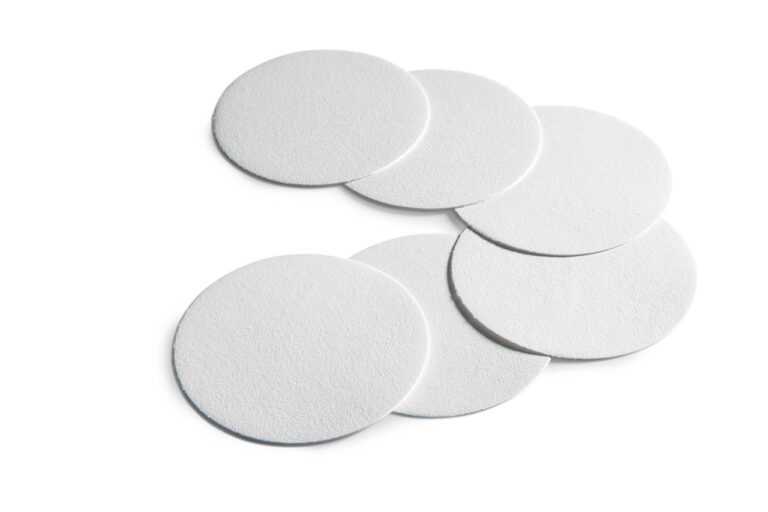
Contents
Filter paper is an indispensable tool in various scientific disciplines. Its ability to separate fine particles from liquids makes it a crucial component in laboratory processes. Whether you are conducting chemical analysis, microbiology experiments, or general research, understanding the Filter Paper uses in Laboratory can significantly enhance the accuracy and efficiency of your work.
Filter Paper Uses in Laboratory
Filter papers come in various types, each designed for specific applications. The main categories include:
Qualitative Filter Paper
Ideal for general laboratory applications, qualitative filter paper is used for routine separation and filtration tasks. It retains large particles and is suitable for qualitative analytical procedures.
Quantitative Filter Paper
This type is used for gravimetric analysis and precise quantitative chemical analysis. It ensures that the filtrate is free from particles that could affect the accuracy of the analysis.
Glass Fiber Filter Paper
Known for its high filtration efficiency and capacity, glass fiber filter paper is used in air sampling, liquid clarification, and other high-temperature applications.
Cellulose Filter Paper
Commonly used for its versatility and efficiency in filtering out particulates, cellulose filter paper is ideal for a wide range of laboratory uses.
Ashless Filter Paper
Used in gravimetric analysis where the paper must be completely incinerated without leaving any ash residue.
Applications of Filter Paper in Laboratories
Filter paper serves multiple functions in laboratory settings, from simple filtration to complex analytical procedures. Here are some of the most common uses:
Chemical Analysis
Filter paper is widely used in chemical laboratories for separating solids from liquids. This is crucial in analytical processes where the purity of the sample is paramount. For instance, during titrations or when preparing samples for spectroscopic analysis, filter paper ensures that the solutions are free from particulate contaminants.
Microbiology
In microbiological studies, filter paper plays a critical role in culturing bacteria and fungi. By placing the filter paper in a Petri dish with a growth medium, researchers can isolate and grow colonies of microorganisms for further study. This method is particularly useful for antibiotic susceptibility testing, where discs impregnated with antibiotics are placed on the filter paper to observe microbial growth inhibition.
Environmental Testing
Environmental scientists use filter paper to sample and analyze air and water quality. For example, in air sampling, filter paper traps airborne particles, which are then analyzed to determine pollution levels. In water testing, filter paper helps in separating suspended solids from water samples, enabling accurate assessment of water quality.
Pharmaceutical Applications
The pharmaceutical industry relies on filter paper for various testing and quality control processes. Filter paper is used in the production of sterile products, where it filters out particulate matter. Additionally, it is used in the preparation of samples for chromatographic analysis, ensuring that the samples are free from interfering particles.
Food and Beverage Industry
Filter paper is essential in the food and beverage industry for ensuring product quality and safety. It is used in the clarification of beverages like wine, beer, and juice, where it removes particulates that can affect the taste and appearance of the product. In food testing laboratories, filter paper helps in analyzing the nutritional content and detecting contaminants in food samples.
Choosing the Right Filter Paper
Selecting the appropriate filter paper for your laboratory application involves considering several factors:
Pore Size
The pore size of the filter paper determines its ability to retain particles. Smaller pore sizes are suitable for fine filtration, while larger pore sizes are ideal for retaining coarse particles.
Flow Rate
The flow rate indicates how quickly the liquid passes through the filter paper. A higher flow rate is beneficial for applications requiring rapid filtration, whereas a slower flow rate may be necessary for precise analytical procedures.
Chemical Compatibility
Ensure that the filter paper is compatible with the chemicals and solvents used in your application. Some filter papers may degrade or react with certain chemicals, affecting the filtration process.
Strength and Durability
Depending on the application, you may need filter paper that can withstand high temperatures, pressure, or prolonged use without tearing or disintegrating.
Conclusion
Filter paper is a versatile and essential tool in laboratory settings, offering reliable performance in various scientific applications. By understanding the different types of filter paper and their specific uses, you can enhance the accuracy and efficiency of your laboratory work. Whether you are conducting chemical analysis, microbiological studies, environmental testing, or working in the pharmaceutical and food industries, selecting the right filter paper is crucial for achieving optimal results. For those looking to purchase high-quality filter paper and other lab supplies online, it is important to choose a reputable supplier to ensure you receive the best products for your needs.